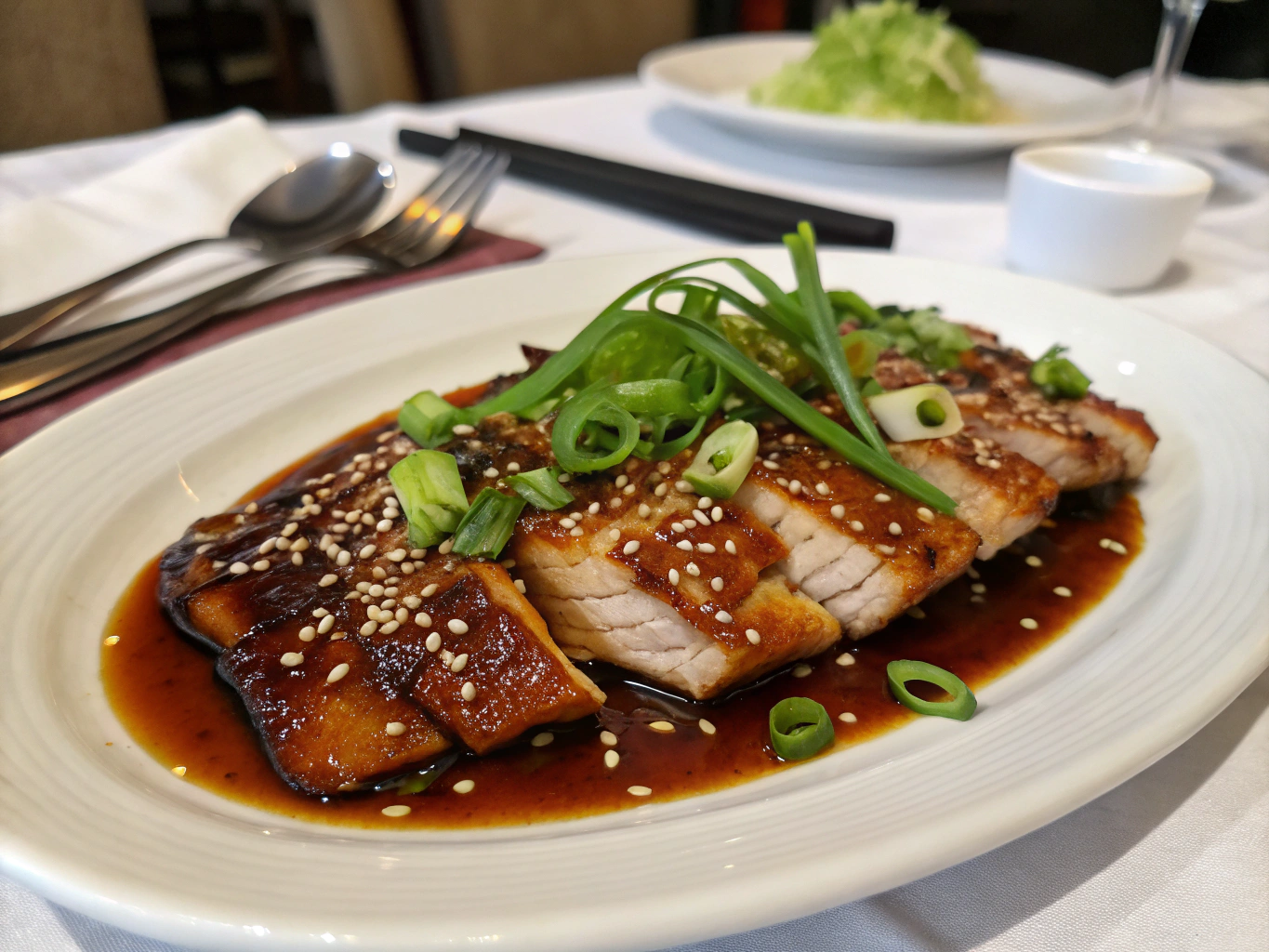
Teriyaki sauce is a staple in countless kitchens—and for good reason. This sweet, savory condiment brings depth and flair to meats, vegetables, and grains. In this comprehensive guide, you’ll discover everything from how to make your own teriyaki sauce from scratch to flavor pairings, nutrition benefits, and proper storage methods. Whether you’re new to Asian-inspired cooking or you’re just keeping it fresh at home, you’ll learn how to craft better meals using this timeless sauce.
Let’s get started with a personal story and dive into just how magical teriyaki sauce can be in your kitchen.
Teriyaki Memories: Making Magic with Grandma
How Teriyaki Sauce Became a Pantry MVP
Some recipes cling to my memory not just for their flavors, but for how they made me feel—the warmth of being in my grandmother’s kitchen, the bubbling skillet, and the tiny splatter that landed just between my fingers while taste-testing something with a sweet soy glaze. That was my first introduction to teriyaki sauce.
Though grandma never called it “teriyaki”—she just mixed soy sauce, brown sugar, and a dash of garlic—it was unmistakably that bold, caramel-hued glaze. It wasn’t until years later, after a stint with culinary school and working food trucks, that I learned how a few simple tweaks could elevate grandma’s humble glaze into authentic, homemade teriyaki sauce.
I now create my own version of teriyaki sauce that blends tradition and experimentation. It’s one of those sauces that looks fancy but is incredibly simple at heart. You don’t need rare ingredients or even a fancy bottle. Just some pantry goods, a saucepan, and your curious spirit.
Homemade teriyaki sauce is about comfort and creativity. It’s a reminder that the best meals don’t always come from fine dining—they spring from smoky kitchens, splattered aprons, and lots of love.
Why Teriyaki Sauce Belongs in Every Kitchen
Making your own teriyaki sauce means full control over sweetness, saltiness, and even spice. Want it thicker for dipping? Simmer it down. Prefer something lighter for stir-fry? Leave it smooth and glossy. Once you discover how to make a fail-proof batch at home, you’ll ditch the store-bought versions—and possibly the preservatives that come with them.
As you’ll see, teriyaki sauce works beautifully on chicken, salmon, roasted tofu, or even a vibrant veggie bowl like flavor-rich veggie stir fry. Let’s walk through what goes into this magical blend.
How to Make Teriyaki Sauce from Scratch
Ingredients List: Build Big Flavor with Just a Few Staples
Making teriyaki sauce doesn’t require a culinary degree. Most of the ingredients are already in your pantry. Here’s what you’ll need:
| Ingredient | Purpose & Notes |
|---|---|
| Soy Sauce (Low Sodium) | Forms the base; adds umami and savory depth |
| Brown Sugar or Honey | Provides sweetness; choose honey for a floral undertone |
| Garlic (Fresh or Powdered) | Sparks the flavor; complements soy’s saltiness |
| Ginger (Fresh or Ground) | Adds brightness and zing; optional but recommended |
| Cornstarch | Thickens the sauce for that iconic glaze |
| Water | Balances the concentration and prevents over-salting |
You can tweak the recipe using maple syrup instead of sugar for a vegan-friendly twist or swap in coconut aminos for a soy-free version.
Timing and Texture: Quick, Customizable Cooking
🕒 Prep Time: 5 minutes
🕒 Cook Time: 10 minutes
🕒 Total Time: 15 minutes
This quick sauce takes one commercial break to prep and another to bring to a boil. It’s fast, flexible, and ready when you are.
Step-by-Step Instructions: Homemade Teriyaki Sauce
- In a medium saucepan, combine ½ cup soy sauce, ¼ cup water, 3 tbsp brown sugar (or honey), 1 tsp minced garlic, and ½ tsp ground ginger.
- Heat over medium, stirring occasionally, just until it begins to simmer.
- In a small bowl, mix 1 tbsp cornstarch with 2 tbsp cold water.
- Slowly whisk cornstarch slurry into the saucepan. Keep stirring as it simmers for 3–4 minutes until it thickens to your liking.
- Once glossy and smooth, remove it from heat. Let cool slightly before storing or glazing over your protein of choice.
Need meal inspiration? Try drizzling this over crispy tofu with warm soba noodles for a satisfying midweek dinner.
For those watching sodium intake, the FDA’s sodium intake guidelines explain daily recommendations.
Flavor Pairings and Creative Uses
What Goes Well with Teriyaki Sauce
The beauty of homemade teriyaki sauce lies in its versatility. It’s equally welcome at the dinner table poured over grilled chicken as it is layered onto a teriyaki meatball sub. The sweetness balances spicy heat and acidic brightness alike.
Try it with:
- Pan-seared salmon topped with sesame seeds
- Roasted vegetables or stir-frys like our kale veggie bowl with rice
- Fried rice with tofu chunks
- Glazing tempeh skewers for plant-based BBQ nights
The sauce also makes dull leftovers exciting again. Reheat grains and protein, then add a spoonful of this sauce to bring everything back to life.
Make-Ahead, Storage & Reuse Tips
Homemade teriyaki sauce stores beautifully.
- Store: Let the sauce cool fully, then transfer to a sealed jar or bottle.
- Refrigerate: Keeps fresh for up to 10–12 days
- Freeze: Freeze in silicone trays for up to 2 months
- Reheat: Warm lightly before using to restore thickness
Re-purpose every drop: Leftovers can turn into salad dressings (add vinegar), or serve as marinades for plant-based grilled wraps on summer evenings.
Even a small batch can stretch across several meals and cuisine categories.
FAQs About Teriyaki Sauce
What is teriyaki sauce made of?
Authentic teriyaki sauce blends soy sauce, sugar, and a flavoring agent like ginger or garlic. My homemade version makes it even simpler, using pantry staples like brown sugar, garlic, and cornstarch for that thick, glossy texture.
Is teriyaki sauce spicy or sweet?
Traditional teriyaki sauce leans sweet and savory—never spicy. If you love heat, add a pinch of red pepper flakes or sriracha to your next batch.
What are the three ingredients in teriyaki sauce?
At its core, teriyaki sauce consists of soy sauce, sugar, and honey.
Are teriyaki and soy sauce the same or different?
They’re related but not the same. Soy sauce is a salty, fermented base. Teriyaki sauce builds on this base by adding sugar, aromatics, and thickeners for a deeper, glaze-like condiment.
Conclusion: Stirring Up Tradition with a Twist
Cooking should be joyful and accessible—and teriyaki sauce is both. With just a few simple ingredients and a craving for flavor, you can bring depth and dimension to almost any dish. From smoky stir-fry nights to grilled tofu bowls, this homemade sauce will become your go-to flavor tuner in no time.
I’ve carried this sauce from my grandmother’s table to crowded farmers’ markets and neighborhood potlucks. Now it’s yours to share. Here’s to stirring, pouring, dipping—and making memories, one batch at a time.
Want more heart-hugging recipes filled with bold flavor? Stick around FlavivoRecipes for goodness like our sweet sesame broccoli rice stir-fry or roasted carrot ginger soup. Let’s turn another simple meal into something unforgettable.
